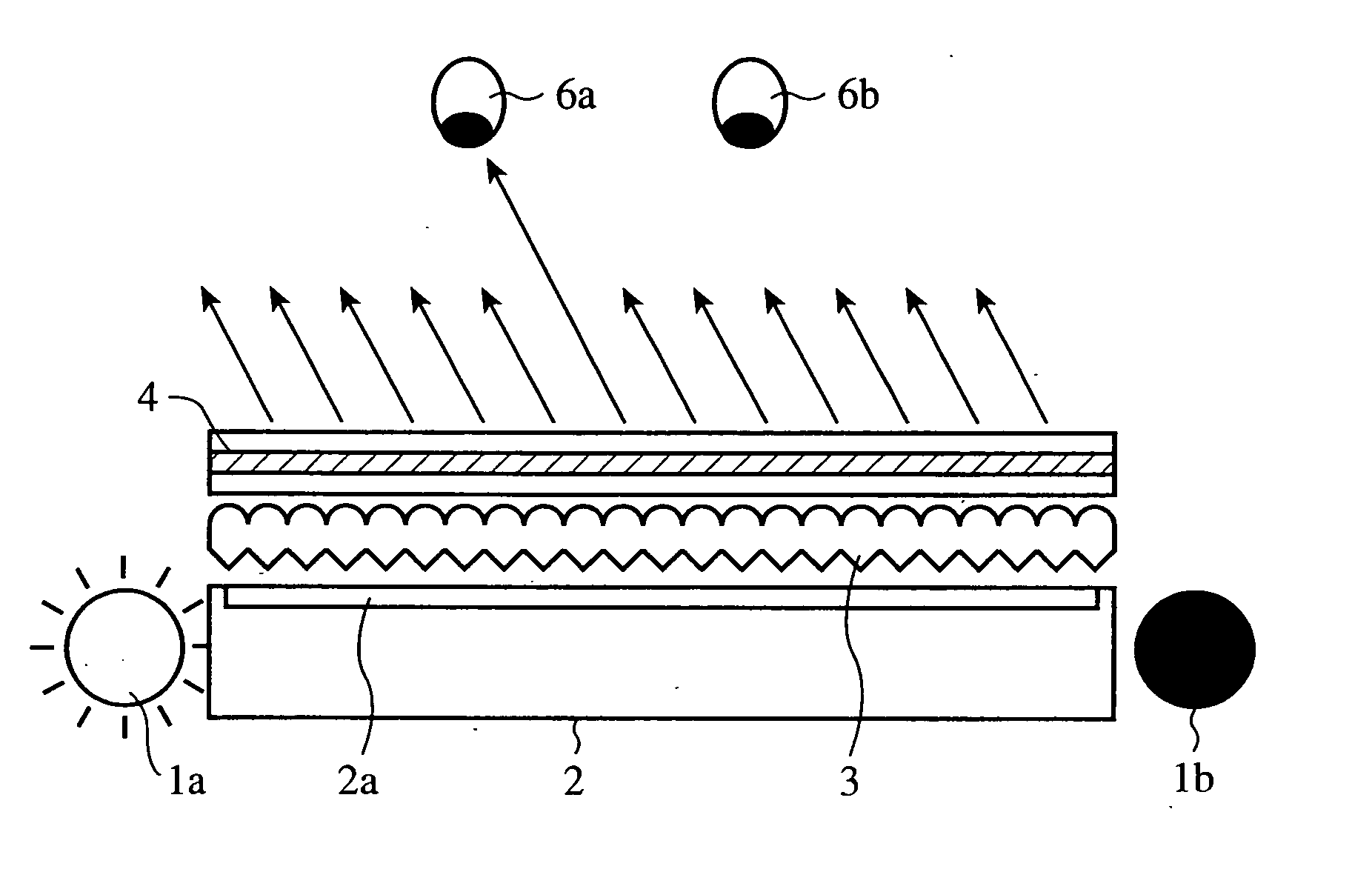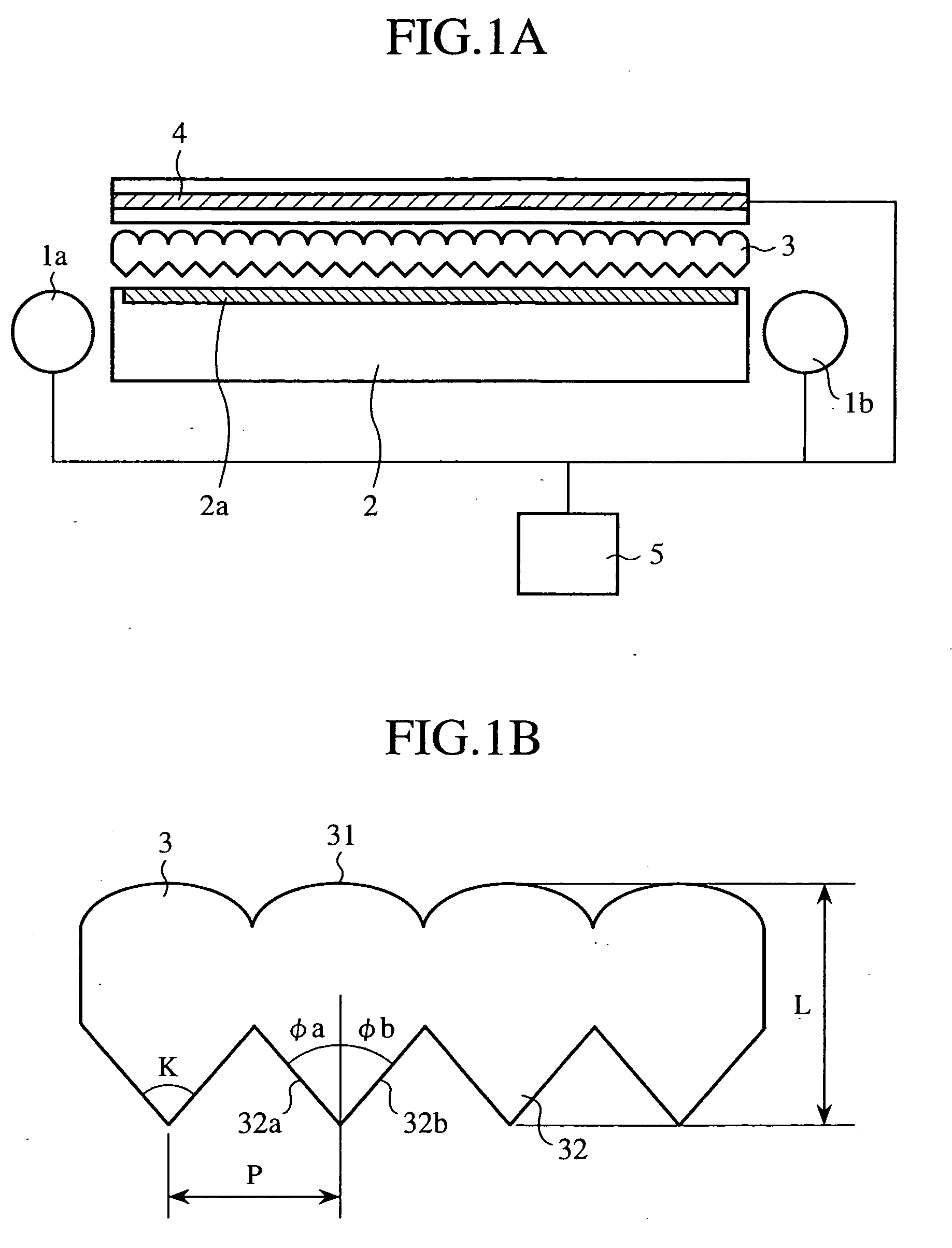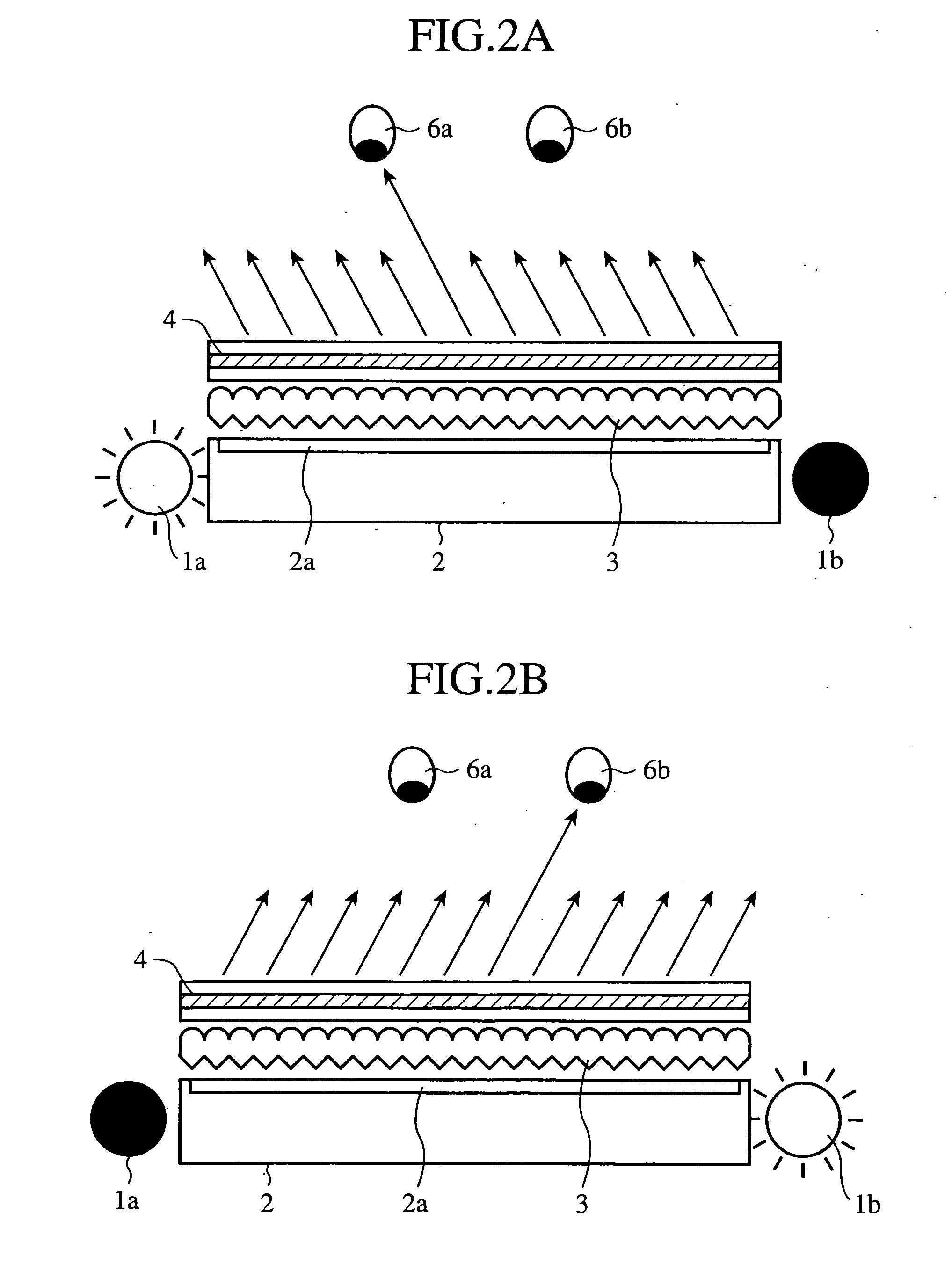Display unit and electronic apparatus with display unit
a technology of electronic equipment and display unit, which is applied in the field of display system, can solve the problems of lowering the resolution of the plane image display, difficult switching between the presence and absence of the lenticular lens system, and unsatisfactory and uncomfortable feeling, and achieves the effect of high quality stereoscopic vision and little crosstalk
- Summary
- Abstract
- Description
- Claims
- Application Information
AI Technical Summary
Benefits of technology
Problems solved by technology
Method used
Image
Examples
embodiment 1
[0036]FIGS. 1A and 1B are side views illustrating a main portion of a display system for a portable information apparatus of an embodiment 1 in accordance with the present invention.
[0037] In FIGS. 1A and 1B A, reference numerals 1a and 1b each designate a light source, and the reference numeral 2 designates a light guiding plate which has a rectangular side and is flat-shaped as a whole, and has a predetermined width in the direction normal to the sheet of paper. At both light input ends of the light guiding plate 2, the light sources 1a and 1b are placed oppositely. The reference numeral 2a designates a light extracting section formed on a surface of the light guiding plate 2 by reflection print, rough surface processing or the like.
[0038] The reference numeral 3 designates a double-sided prism sheet placed on the emitting surface of the light guiding plate 2, and 4 designates a transmissive liquid crystal panel, in which a shaded portion designates a liquid crystal layer.
[0039...
embodiment 2
[0068]FIG. 20 is a front view illustrating an electronic information apparatus of an embodiment 2 in accordance with the present invention. Here, to describe the details of the display system, an interior portion of the electronic information apparatus is shown in the periphery of the display system.
[0069] In FIG. 20, the electronic information apparatus, a portable electronic notepad, has in its body 10 light sources 1a and 1b placed face to face on the right and left side of a light guiding plate 2. The light sources 1a and 1b include a light-emitting diode 8 and a light guide 9. The light output from the light-emitting diode 8, traveling through the light guide 9, gradually radiates toward the light guiding plate 2, thereby radiating uniformly to the sides of the light guiding plate 2.
[0070] The reference numeral 3 designates a double-sided prism sheet mounted on the emitting surface of the light guiding plate 2. The double-sided prism sheet 3 has a triangular prism bank and a ...
embodiment 3
[0074]FIG. 21 is a structural diagram illustrating an electronic information apparatus and display system of an embodiment 3 in accordance with the present invention.
[0075] In FIG. 21, the electronic information apparatus, a portable telephone 12, includes a display system of the embodiment 1. The display system is disposed in such a fashion that it displays different images in upper and lower portions. In other words, the light sources 1c and 1d are placed opposingly at the top and bottom of the light guiding plate 2. The reference numeral 3 designates a double-sided prism sheet disposed on the emitting surface of the light guiding plate 2. The triangular prism bank and cylindrical prism bank of the double-sided prism sheet 3 extend in the lateral direction. The reference numeral 4 designates a transmissive liquid crystal panel mounted on the double-sided prism sheet. Since the other details of the display system are the same as those of the embodiment 1, their description is omit...
PUM
 Login to View More
Login to View More Abstract
Description
Claims
Application Information
 Login to View More
Login to View More - R&D
- Intellectual Property
- Life Sciences
- Materials
- Tech Scout
- Unparalleled Data Quality
- Higher Quality Content
- 60% Fewer Hallucinations
Browse by: Latest US Patents, China's latest patents, Technical Efficacy Thesaurus, Application Domain, Technology Topic, Popular Technical Reports.
© 2025 PatSnap. All rights reserved.Legal|Privacy policy|Modern Slavery Act Transparency Statement|Sitemap|About US| Contact US: help@patsnap.com



